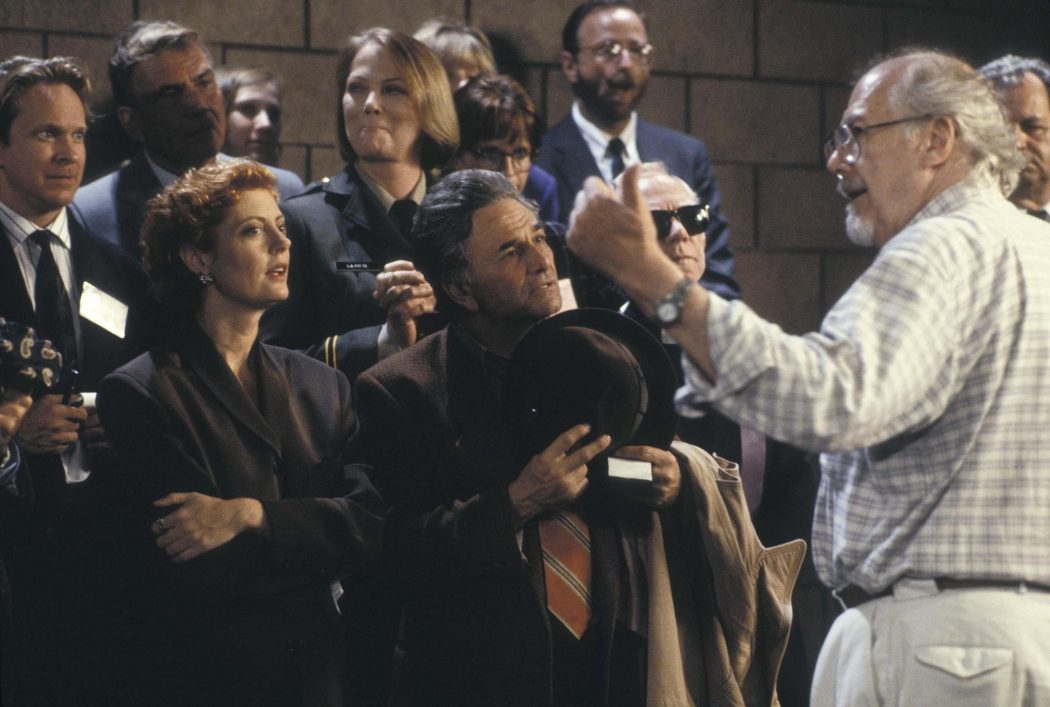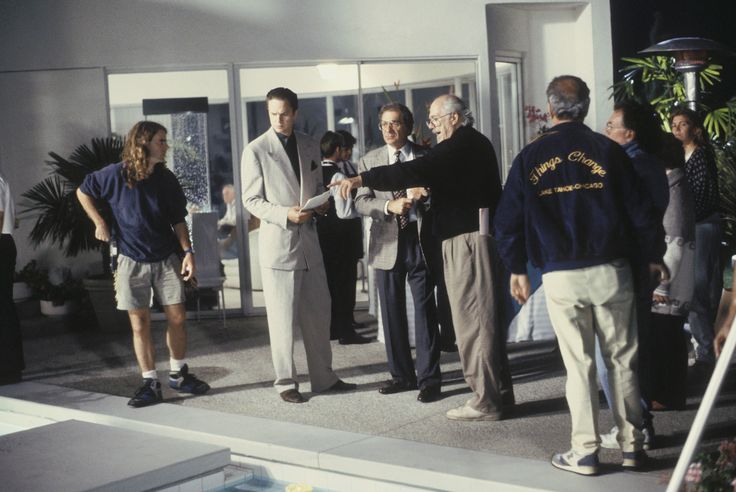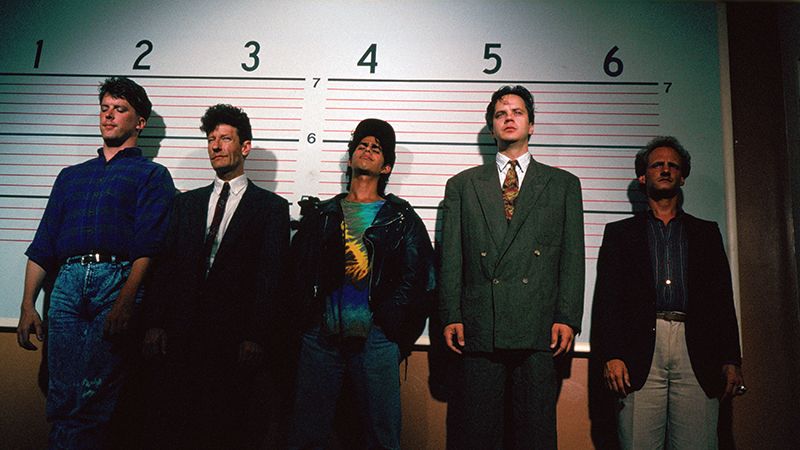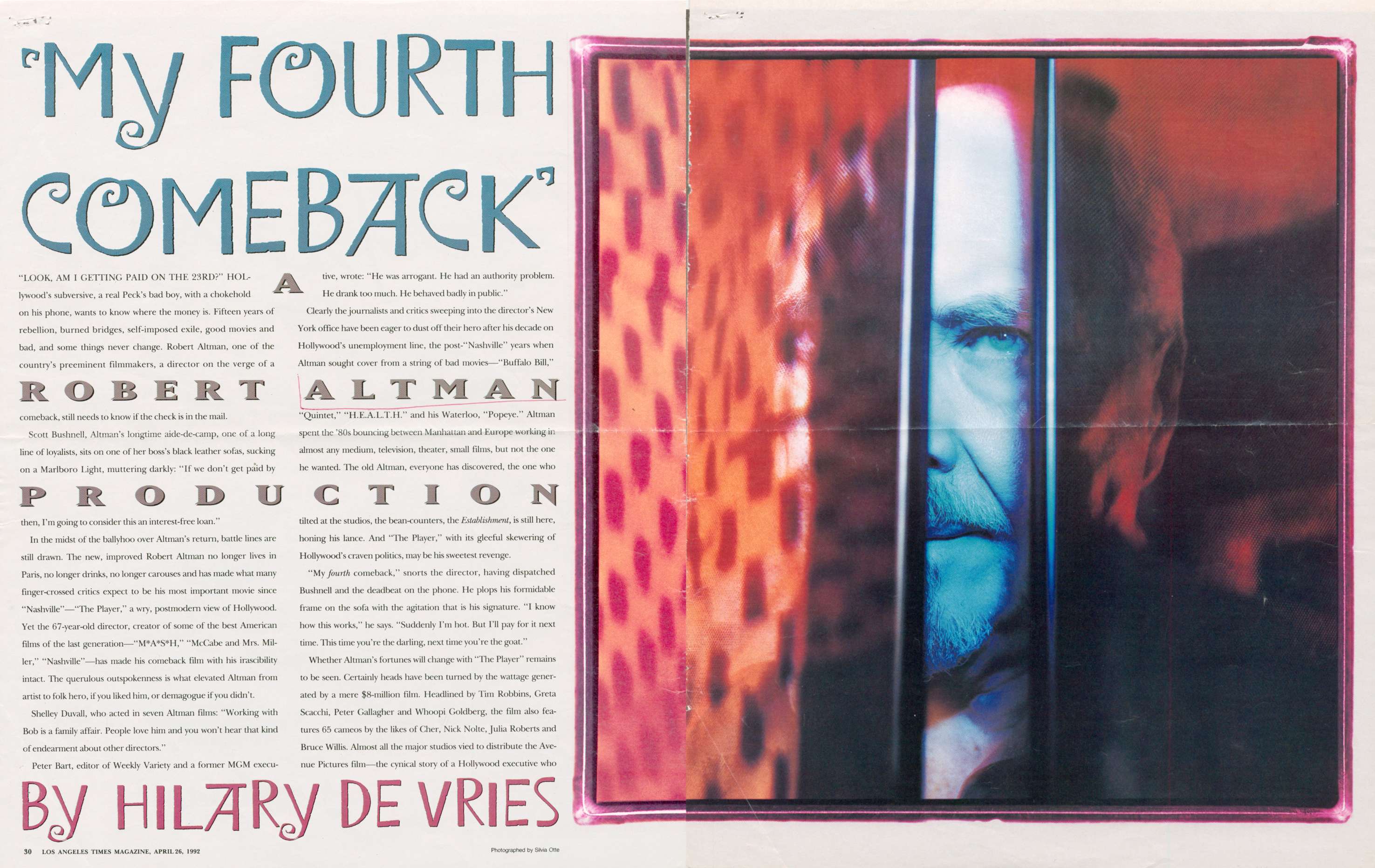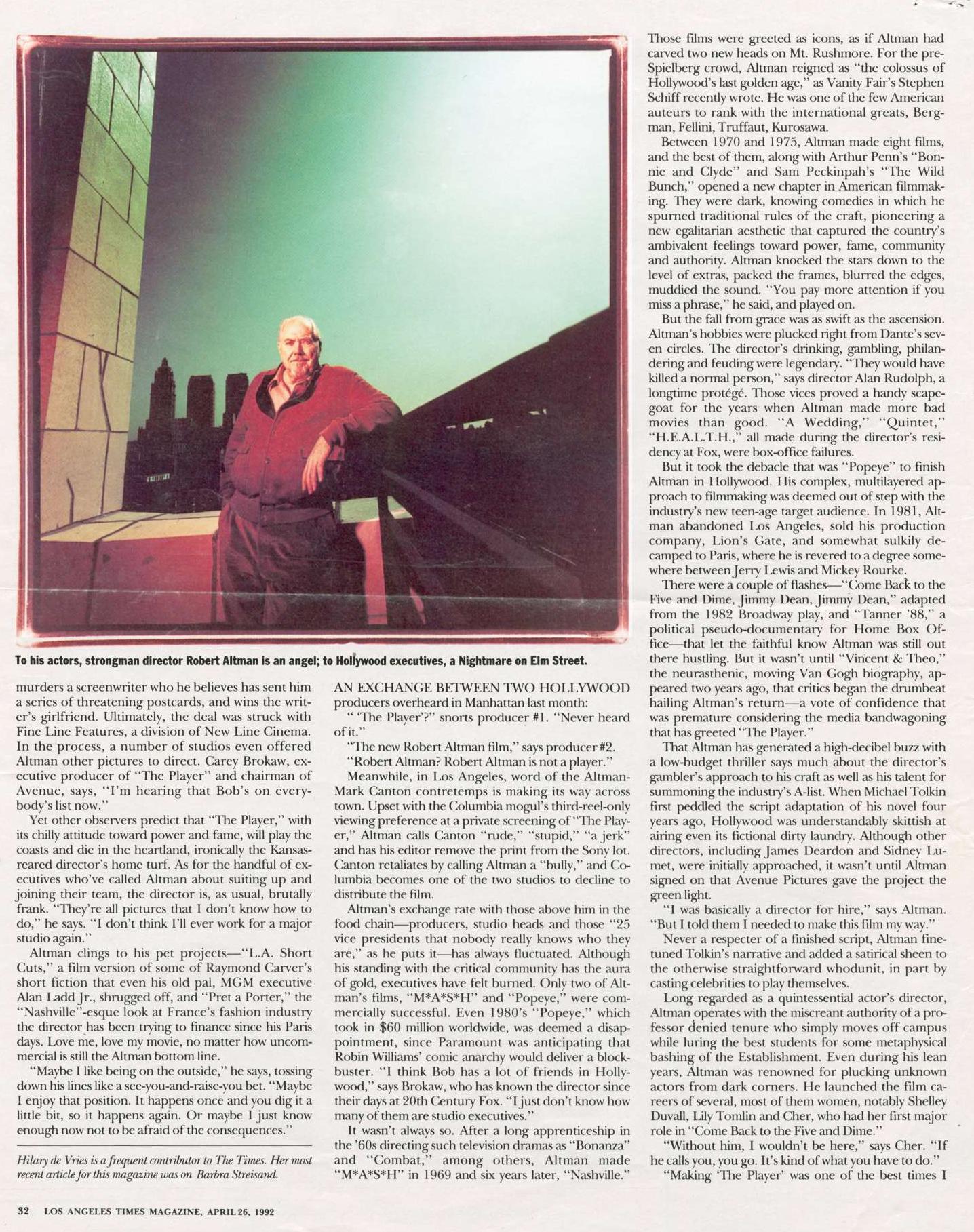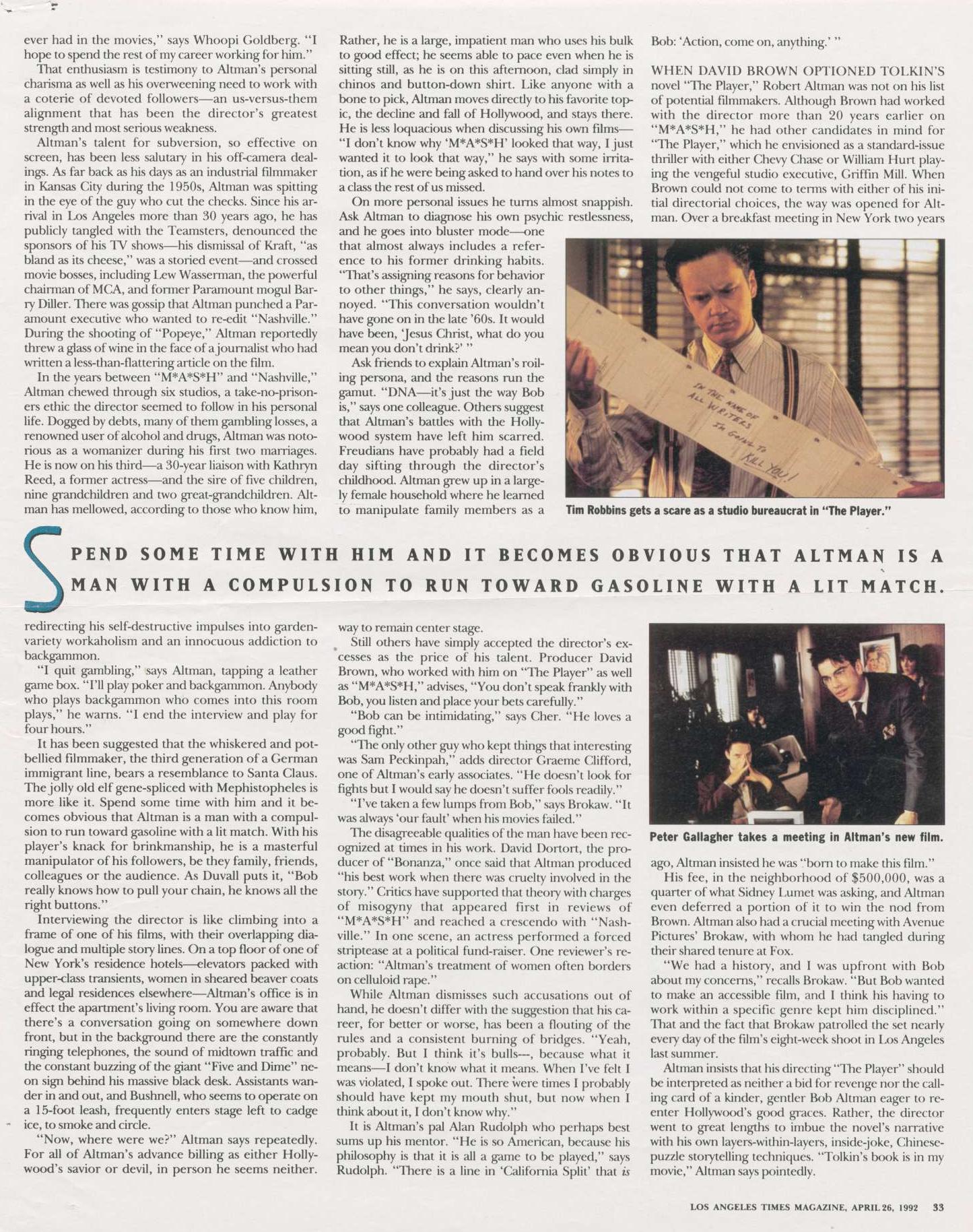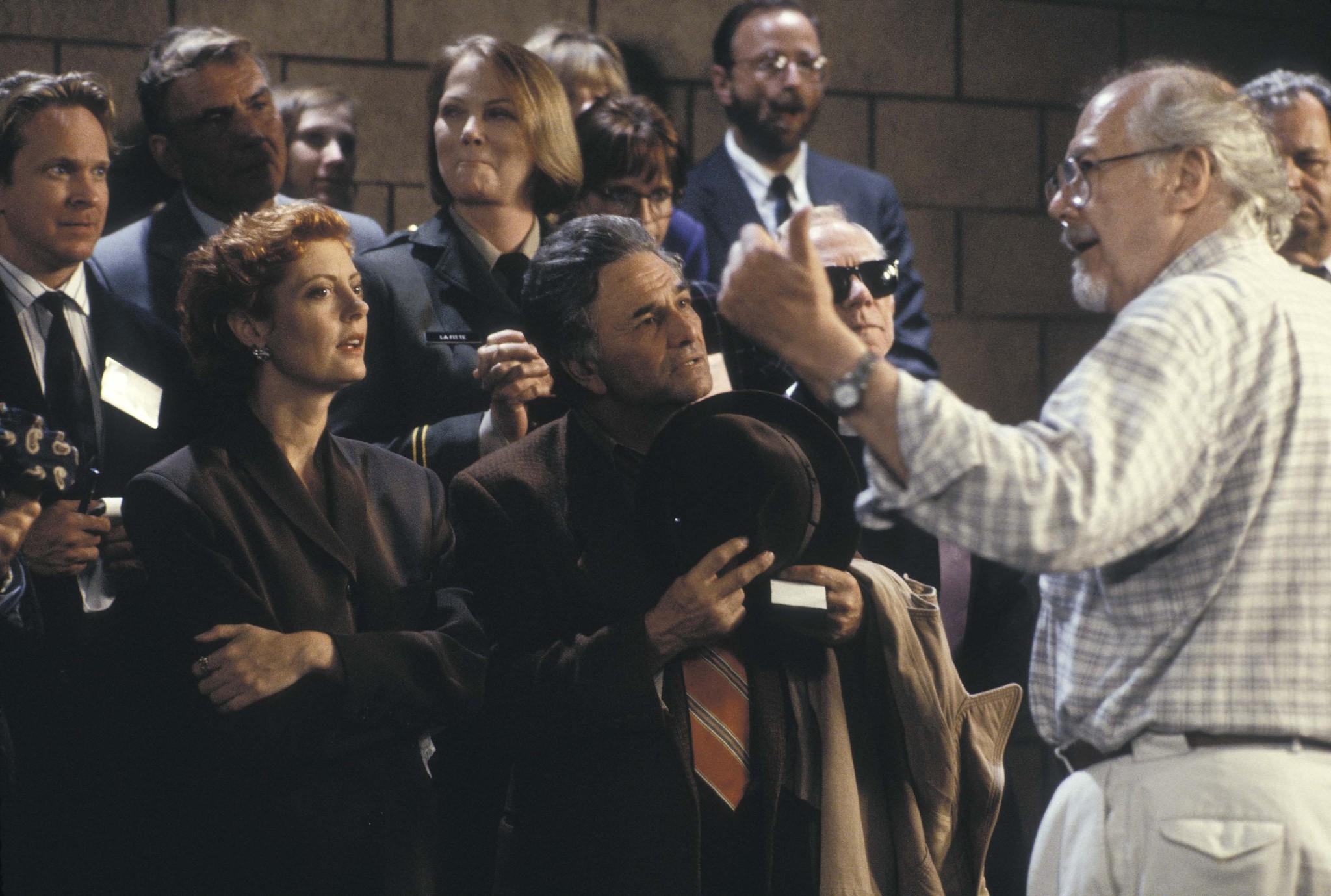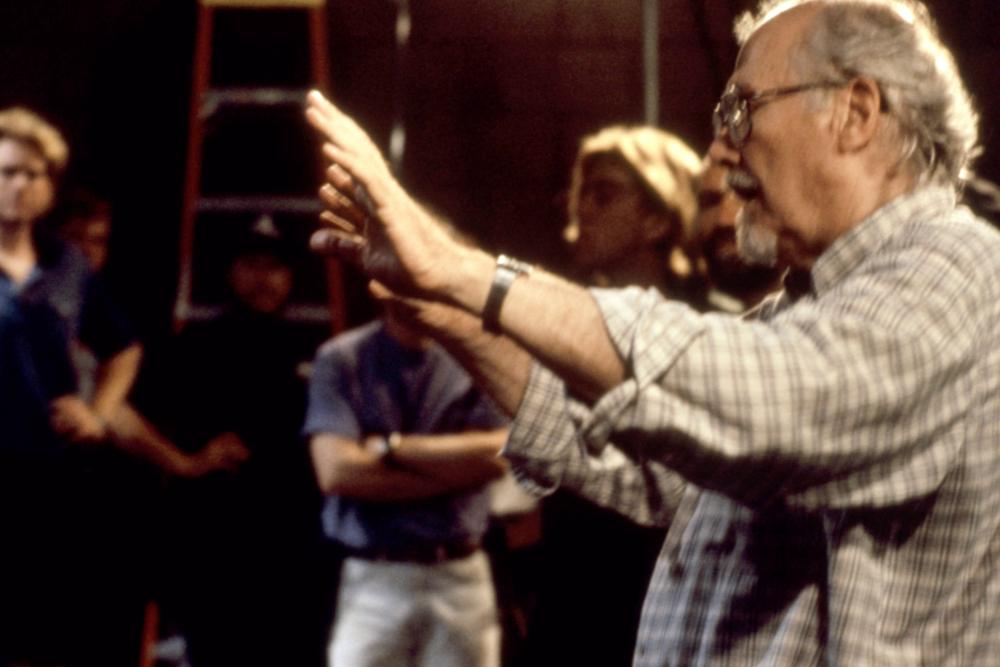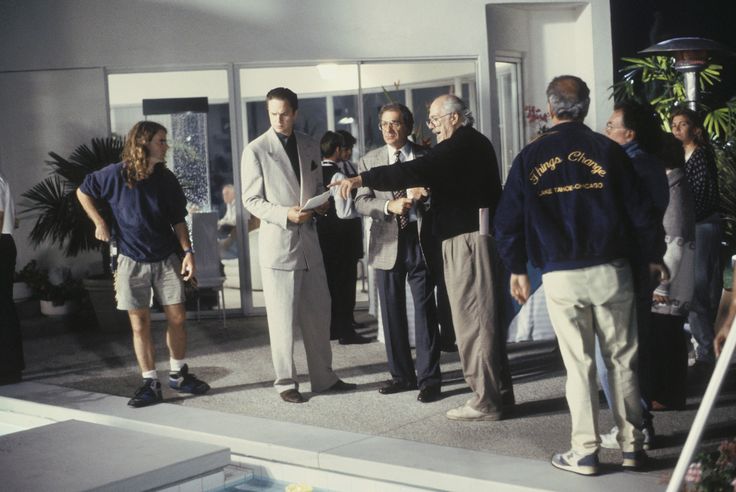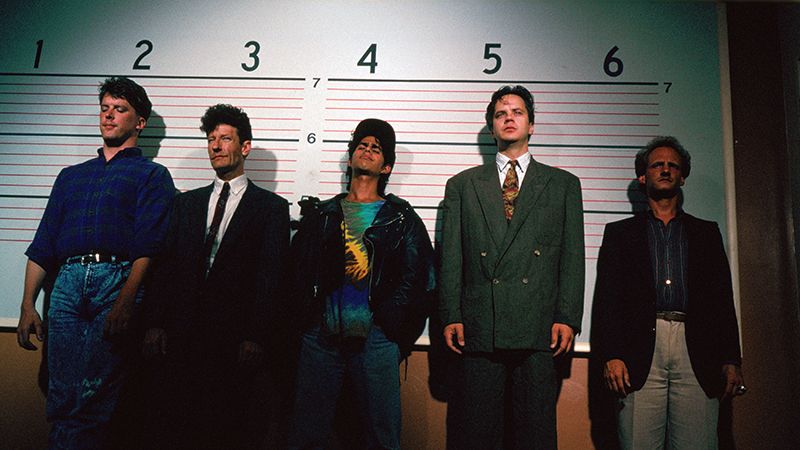After spending a whole decade in an unofficial exile after several weak box office results, Robert Altman returned to the Hollywood studio system in 1992, when The Player blew everyone away. It would seem easy to categorize this brilliant and hilarious satire to some kind of personal revenge from the spurned filmmaker, who was a hot merchandise in the seventies with hits like M.A.S.H. or Nashville, but as Altman acknowledges himself, he’s as much of the butt of the joke as the rest of Hollywood he so stylishly mocks in this movie. After all, he’s a player, too. But it’s precisely that fact that gives him such an insightful position to expose the true nature of film production in Tinseltown. What makes The Player even more interesting is the unbelievable number of famous faces who agreed to do cameos in the film. Altman’s voice was obviously backed up by the strong voices of numerous other Hollywood artists grinding away to make a living in the ruthless industry. Written by Michael Tolkin, based on his own novel of the same time published in 1988, The Player received high critical acclaim and touched the right strings in the audiences around the world, even bringing Altman a triumph in the Best Director category at the Cannes Film Festival.
In the years before this movie, the age of the director who had a free hand came to an end. And yet Altman kept experimenting with different kinds of actor, different approaches to narrative, different equipment, until finally he hit it with this movie, which took him off onto a whole other level. —Martin Scorsese
The story of a studio executive who finds his life of undeserved luxury threatened by ambitious and equally ruthless competition inside the studio at the same time examines and exhibits everything that could be called wrong in contemporary Hollywood filmmaking. The profit-oriented, money-starving industry which immediately shuns any artistic ambitions in favor of easy, risk-free box office success in The Player is explored with heartbreaking realism and edginess, simultaneously providing plenty of opportunities for laughing out loud at its absurdities. It’s difficult to judge the studio executive, played marvelously by Tim Robbins, as Altman intentionally makes us sympathetic to a character we should easily despise and shun. Altman knows the protagonist of his film is no villain, only a byproduct of a damaged, unhealthy and artistically and creatively destructive climate that’s hardly present only in Hollywood. If Tim Robbins’ character is a metaphor for all Hollywood, than Hollywood is simply a larger metaphor for the world that gave birth to it. What we find especially fascinating is how The Player effectively deconstructs the practice of making movies, unmasking the formulaic, cash-driven studios for what they are, but who can say the lesson has been absorbed, when you look at what cinemas offer these days? A quarter of a century later, one could argue that the situation is even worse than when Tolkin and Altman were inspired to create this haunting cautionary tale.
Starring Robbins, Greta Scacchi, Peter Gallagher and Whoopi Goldberg, edited by Altman’s favorite editor from the nineties, the great Geraldine Peroni, shot by cinematographer Jean Lepine and with the music provided by Thomas Newman, the composer nominated for no less than 13 Academy Awards, The Player is one of the best pictures of the last decade of the 20th century. From the magnificent 8-minute-long opening take to the very end, it’s a very clever, wonderfully written satire sharp as a knife and as illuminating as a campfire in the vast darkness of contemporary show business.
A monumentally important screenplay. Dear every screenwriter/filmmaker, read Michael Tolkin’s screenplay for The Player [PDF]. (NOTE: For educational and research purposes only). The DVD/Blu-ray of the film is available from the Criterion Collection and other online retailers. Absolutely our highest recommendation.
 Loading...
Loading...
‘Robert Altman: Eclectic Maverick’ by Alex Simon. This article originally appeared in the April 1999 issue of Venice Magazine.
The Player is considered the best Hollywood satire ever made. Tell us how you came to it.
It’s not as tough in the picture as it really is in real life. These people are much uglier in real life than they were in that film. There’s a lot more buck-passing that goes on. They actually came to me with The Player while I was putting Short Cuts together. The success of The Player allowed me to do Short Cuts.How difficult was it arranging all the cameos in The Player?
Not that hard. I just got on the phone and called these people up. The big coup was when Julia (Roberts) and Bruce (Willis) agreed to do it. Julia did it because she and Tim Robbins were friends and Bruce did it because Bruce just does that kind of thing. We had a list of who could show up on what day and shot accordingly. I actually had Jeff Daniels and Patrick Swayze in a scene that didn’t make the final cut (you can see it on the DVD version). Most of the people did the cameos, I think, because it made them look human. The scene where Malcolm McDowell attacks Griffin Mill in the hotel lobby, for example, or when Burt Reynolds is sitting with (critic) Charles Champlin, calls Griffin an “asshole.” That was all improvised, by the way.How much time do you rehearse before you shoot?
It depends on what is required in the rehearsals. Is it for lighting, for the prop man, for the crew, for the actors? Whatever seems to be necessary… most improvisations, unless you’re doing a big scene like the church burning in McCabe, you improvise in rehearsal, and then it becomes set by the time you shoot.Do you storyboard?
No, except for certain scenes, like when Sterling walked into the ocean in The Long Goodbye. Logistically that was complicated, so it had to be fairly well-plotted. I don’t do them, but my son Steve storyboarded the whole chase on the dredger in Gingerbread Man. So I shot it that way, based on his storyboard.Your battles with studio execs have been legendary. How would you advise young filmmakers to handle situations like that, to not let their work be compromised?
Well, I think you either fight for your child, or you don’t. You also have to be prepared to suffer the consequences if you start the fight and lose.Any advice for first-time directors?
The same advice I give my children and anybody else: never take advice from anybody! Anybody who gives you advice is giving you what they think is correct for them if they were in your position. But they’re not you! And you’re not them. —Robert Altman: Eclectic Maverick
Director Robert Altman discusses his 1992 feature film The Player, which presents the inner workings of Hollywood as a metaphor for greed in the culture; talks about several of his other movies as well, including Nashville, McCabe & Mrs. Miller, MASH, and Popeye.
With irony and enthusiasm, Altman goes Hollywood, then plays Hollywood against itself, piling up and then undermining movie conventions, as if The Player, in addition to dramatizing the fight between a writer and an executive, is itself, in its choices, the mongrel product of that fight. And in fact, it is: the film begins with a slate dropped before the camera (“Action!”) and ends as Griffin, pulling up to that cozy cottage, buys a writer’s pitch called The Player. But is it a sellout? Whose film is it? The studio’s or the artist’s? The Player asked that question in 1992, on the crest of a great resurgence of independent film in America and, within Hollywood, a healthy influx of independent-minded filmmaking—a mini renaissance that lasted almost two decades before the market collapsed in 2008 and fearful franchise thinking erased from the theatrical market the sorts of small—and mid-budget movies that turn on the strengths of their screenwriters and directors. Today, when it’s the IP (intellectual property) and not the script, or the director, or even the actor, that gets the movie made, when films are green-lit before they are written, and studios, I keep hearing, hire weaker directors because they’re easier to control, I think of that meeting, midway into The Player, the morning after Griffin Mill has killed a writer, when he muses aloud to a roomful of colleagues, “I was just thinking what an interesting concept it is to eliminate the writer from the artistic process. If we can just get rid of these actors and directors, maybe we’ve got something here.” —The Screenplayer by Sam Wasson
Here is an interview with Robert Altman from 1992 discussing The Player, his acclaimed meta-fictional take on Hollywood. Altman talks about the film’s numerous movie star cameos—including Whoopie Goldberg, Patrick Swayze, and Jeff Daniels—and how he was able to round them up for the shoot. The short also includes interviews with some of the cast and a few clips of Altman directing the film. His use of celebrities in the movie makes for some hilarious recounts. Perhaps the most interesting bit is when he talks about casting Cher, telling her to wear red to the black-and-white party scene so she would think “she’s a little more special than everybody else.” —Sam Tunningley, The Seventh Art
‘My fourth comeback’ by Hilary De Vries, Los Angeles Times Magazine, 1992.
Robert Altman’s Hollywood satire The Player was the first of three collaborations between the iconic director and Academy Award–winning actor Tim Robbins, shortly followed by Short Cuts and Ready to Wear. But whereas in the later two films, Robbins was one character among many within the director’s characteristically ensemble casts, in The Player he was the star, playing the amoral Hollywood studio executive Griffin Mill. In an interview conducted for a program on the Criterion Collection’s release of The Player, Robbins sat down to recount his experiences working on the project. In the clip below, you can see a bit of extended footage from the interview, not included on the disc, in which Robbins candidly shares the agreement he and Altman made to ensure that the production would be truly independent.
Here are several photos taken behind-the-scenes during production of Robert Altman’s The Player. Production still photographers: Lorey Sebastian & Scott Hamilton © New Line Cinema, Gracenote, Avenue Pictures Productions, Spelling Entertainment, Addis Wechsler Pictures, Fine Line Features—All Rights Reserved. Intended for editorial use only. All material for educational and noncommercial purposes only.
If you find Cinephilia & Beyond useful and inspiring, please consider making a small donation. Your generosity preserves film knowledge for future generations:
Get Cinephilia & Beyond in your inbox by signing in
[newsletter]
